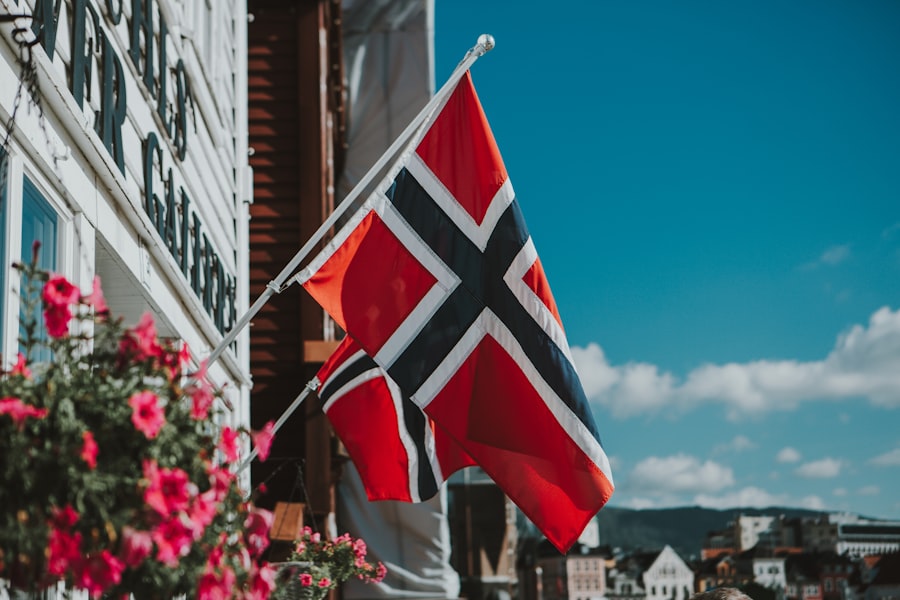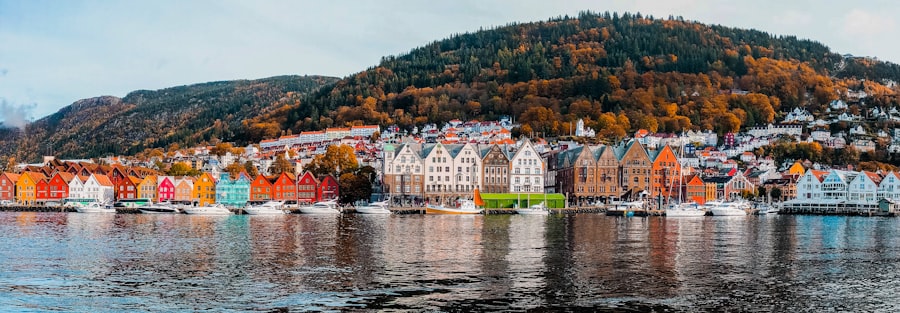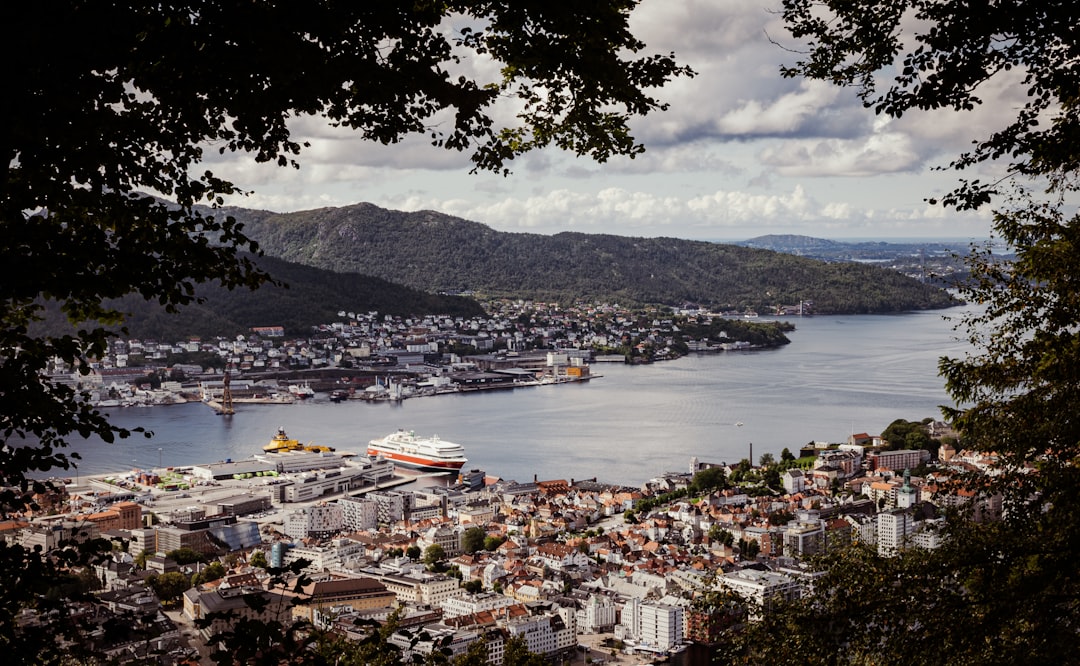Valborgsnatt, or Walpurgis Night, is a celebration steeped in rich history and tradition, originating from ancient pagan customs that herald the arrival of spring. The name itself is derived from Saint Walpurga, an English missionary who became a nun in the 8th century and was canonised for her efforts in spreading Christianity in Germany. However, the roots of Valborgsnatt extend far beyond the Christian context, intertwining with pre-Christian rituals that celebrated fertility, renewal, and the awakening of nature after the long winter months.
As the days grew longer and warmer, communities would gather to mark this transition with festivities that included bonfires, music, and communal feasting. In Norway, Valborgsnatt has evolved into a vibrant celebration that reflects both its historical origins and contemporary cultural practices. The night is often associated with various local legends and folklore, which have been passed down through generations.
These stories often feature witches and spirits, believed to roam the earth on this night, further enriching the mystique surrounding the festivities. As such, Valborgsnatt serves as a bridge between the past and present, allowing Norwegians to connect with their heritage while embracing the joys of spring. Your journey to a smooth relocation starts here. Talk one-on-one with a Norway Relocation specialist and turn your plan into a reality.
Summary
- Valborgsnatt, also known as Walpurgis Night, has its origins in ancient pagan festivals celebrating the arrival of spring.
- Bonfires are a significant part of Valborgsnatt celebrations, symbolizing the end of winter and the coming of light and warmth.
- Traditional food and drinks associated with Valborgsnatt include grilled sausages, mead, and sweet pastries, adding to the festive atmosphere.
- Music and dance play a vital role in Valborgsnatt celebrations, with traditional folk songs and lively dances bringing people together.
- Valborgsnatt is deeply rooted in Norwegian folklore and mythology, with stories of witches, spirits, and the battle between light and darkness.
The Significance of Bonfires in Valborgsnatt
One of the most iconic elements of Valborgsnatt is the lighting of bonfires, which serve as a symbol of purification and protection against evil spirits. Traditionally, these fires were believed to ward off witches who were thought to gather on this night to celebrate their own rites. The flames not only provided warmth and light but also represented the triumph of light over darkness, a theme that resonates deeply with the arrival of spring.
Communities across Norway come together to ignite these bonfires, creating a sense of unity and shared purpose as they celebrate the changing season. The act of gathering around a bonfire fosters a communal spirit, encouraging social interaction and bonding among participants. Families and friends often bring food and drinks to share while enjoying the warmth of the fire.
The flickering flames create an enchanting atmosphere, inviting storytelling and laughter as people reflect on the winter that has passed and look forward to the opportunities that spring brings. In this way, bonfires are not merely a physical manifestation of celebration; they embody the spirit of togetherness that is central to Valborgsnatt.
Traditional Food and Drinks Associated with Valborgsnatt

Food plays a pivotal role in Valborgsnatt celebrations, with traditional dishes reflecting the seasonal bounty and cultural heritage of Norway. As spring arrives, many families prepare hearty meals featuring fresh ingredients that are becoming available after the long winter months. One popular dish is “rømmegrøt,” a creamy porridge made from sour cream, flour, and milk, often served with sugar and cinnamon.
This comforting dish is a nod to Norway’s agricultural roots and is typically enjoyed during festive gatherings. In addition to rømmegrøt, various pastries and baked goods are also integral to Valborgsnatt feasts. “Kransekake,” a traditional Norwegian cake made from almond flour and sugar, is often served at celebrations.
Its intricate ring-shaped design adds a festive touch to any gathering. Furthermore, beverages such as “gløgg,” a spiced mulled wine, are popular during this time, warming participants as they revel in the cool spring evenings. The sharing of food and drink during Valborgsnatt not only nourishes the body but also strengthens social bonds, making it an essential aspect of the celebration.
The Role of Music and Dance in Valborgsnatt Celebrations
Music and dance are integral components of Valborgsnatt festivities, infusing the celebrations with energy and joy. Traditional folk songs are often sung around bonfires, echoing the sounds of generations past. These songs tell stories of nature, love, and community, creating a sense of nostalgia while also celebrating the present moment.
The melodies resonate with the spirit of spring, encouraging participants to join in and share their voices in harmony. Dancing is another cherished tradition during Valborgsnatt. As people gather around the bonfire, spontaneous dance parties often erupt, with participants moving to lively folk tunes or contemporary music alike.
This joyous expression allows individuals to let loose and embrace the carefree spirit of spring. The combination of music and dance fosters an atmosphere of celebration that transcends age and background, uniting everyone in a shared experience of joy and renewal.
Valborgsnatt in Norwegian Folklore and Mythology
Valborgsnatt is deeply intertwined with Norwegian folklore and mythology, drawing upon ancient beliefs about nature and the supernatural. Many tales recount how witches would gather on this night to perform rituals under the light of the full moon. These stories often depict witches as powerful figures who could influence the natural world, embodying both fear and fascination within Norwegian culture.
As such, Valborgsnatt serves as a reminder of humanity’s connection to nature and the mysteries that lie within it. Additionally, various mythical creatures are said to be active during Valborgsnatt. Trolls, elves, and other beings from Norwegian folklore are believed to emerge from their hiding places as winter gives way to spring.
These tales add an element of enchantment to the celebrations, inviting participants to engage with their cultural heritage while embracing the magic of the season. By honouring these stories during Valborgsnatt, Norwegians keep their folklore alive, passing it down through generations as an essential part of their identity.
The Custom of Wearing White Clothes on Valborgsnatt

A unique custom associated with Valborgsnatt is the tradition of wearing white clothes. This practice is thought to symbolise purity and renewal, aligning with the themes of springtime rebirth that characterise the celebration. Many participants don white garments as they gather around bonfires or partake in festivities, creating a striking visual representation of unity and hope for the season ahead.
The choice of white clothing also reflects a connection to historical practices where individuals would dress in light colours to signify the end of winter’s darkness. This custom has evolved over time but remains an important aspect of Valborgsnatt celebrations today. Wearing white not only enhances the festive atmosphere but also serves as a reminder of the fresh beginnings that spring brings—a time for new opportunities and growth.
Valborgsnatt Traditions in Different Regions of Norway
While Valborgsnatt is celebrated throughout Norway, regional variations add depth and diversity to its observance. In some areas, particularly in rural communities, traditional customs may be more pronounced, with elaborate bonfire displays and age-old rituals being upheld with great reverence. In contrast, urban centres may incorporate modern elements into their celebrations while still honouring traditional practices.
For instance, in Northern Norway, it is common for communities to host large gatherings featuring traditional music performances alongside bonfire lighting. In contrast, cities like Oslo may see more contemporary celebrations that include street festivals or organised events in public parks. Despite these differences, the underlying themes of community bonding and celebration of spring remain consistent across regions.
Modern-Day Celebrations of Valborgsnatt in Norway
In contemporary Norway, Valborgsnatt has adapted to reflect modern sensibilities while retaining its core traditions. Many cities now host organised events that draw large crowds eager to participate in the festivities. These events often feature live music performances, food stalls offering traditional dishes, and activities for families—creating an inclusive atmosphere for all ages.
Social media has also played a significant role in shaping modern-day celebrations. People share their experiences online through photos and videos, showcasing their unique interpretations of Valborgsnatt traditions. This digital engagement fosters a sense of community beyond geographical boundaries as individuals connect over shared experiences and cultural pride.
Valborgsnatt as a Family-Friendly Spring Festival
Valborgsnatt has evolved into a family-friendly festival that welcomes participants of all ages. Many communities organise activities specifically designed for children, such as games or storytelling sessions centred around folklore themes. This inclusivity ensures that families can enjoy quality time together while immersing themselves in cultural traditions.
The emphasis on family-friendly activities also reflects a broader societal shift towards creating inclusive spaces for celebration. By fostering an environment where children can learn about their heritage through engaging experiences, Valborgsnatt serves as an educational opportunity as well as a festive occasion.
Valborgsnatt’s Connection to the Arrival of Spring in Norway
At its core, Valborgsnatt embodies humanity’s deep-rooted connection to nature’s cycles—particularly the arrival of spring after winter’s harsh grip. As flowers begin to bloom and animals emerge from hibernation, this celebration marks a pivotal moment in the seasonal calendar when life reawakens across Norway’s landscapes. The timing of Valborgsnatt aligns perfectly with these natural changes; it occurs on April 30th—just before May Day—when daylight hours increase significantly.
This synchronisation reinforces its significance as a celebration not only of cultural heritage but also of nature’s resilience and renewal.
How Valborgsnatt Compares to Other Spring Celebrations in Norway
Valborgsnatt stands out among other spring celebrations in Norway due to its unique blend of ancient customs and modern interpretations. While events like May Day focus primarily on labour rights or national pride—Valborgsnatt centres around community bonding through shared experiences rooted in folklore. Moreover, unlike other festivals that may be more formalised or structured—Valborgsnatt retains an element of spontaneity characterised by bonfire gatherings where individuals come together organically without rigid schedules or expectations.
In conclusion, Valborgsnatt serves as both a celebration of spring’s arrival and an opportunity for Norwegians to connect with their cultural heritage through food, music, dance—and most importantly—community spirit. As this vibrant festival continues to evolve over time—it remains firmly anchored in tradition while embracing modernity—a testament to its enduring significance within Norwegian society today.
Register for a Norwegian class at the NLS Norwegian Language School now!

